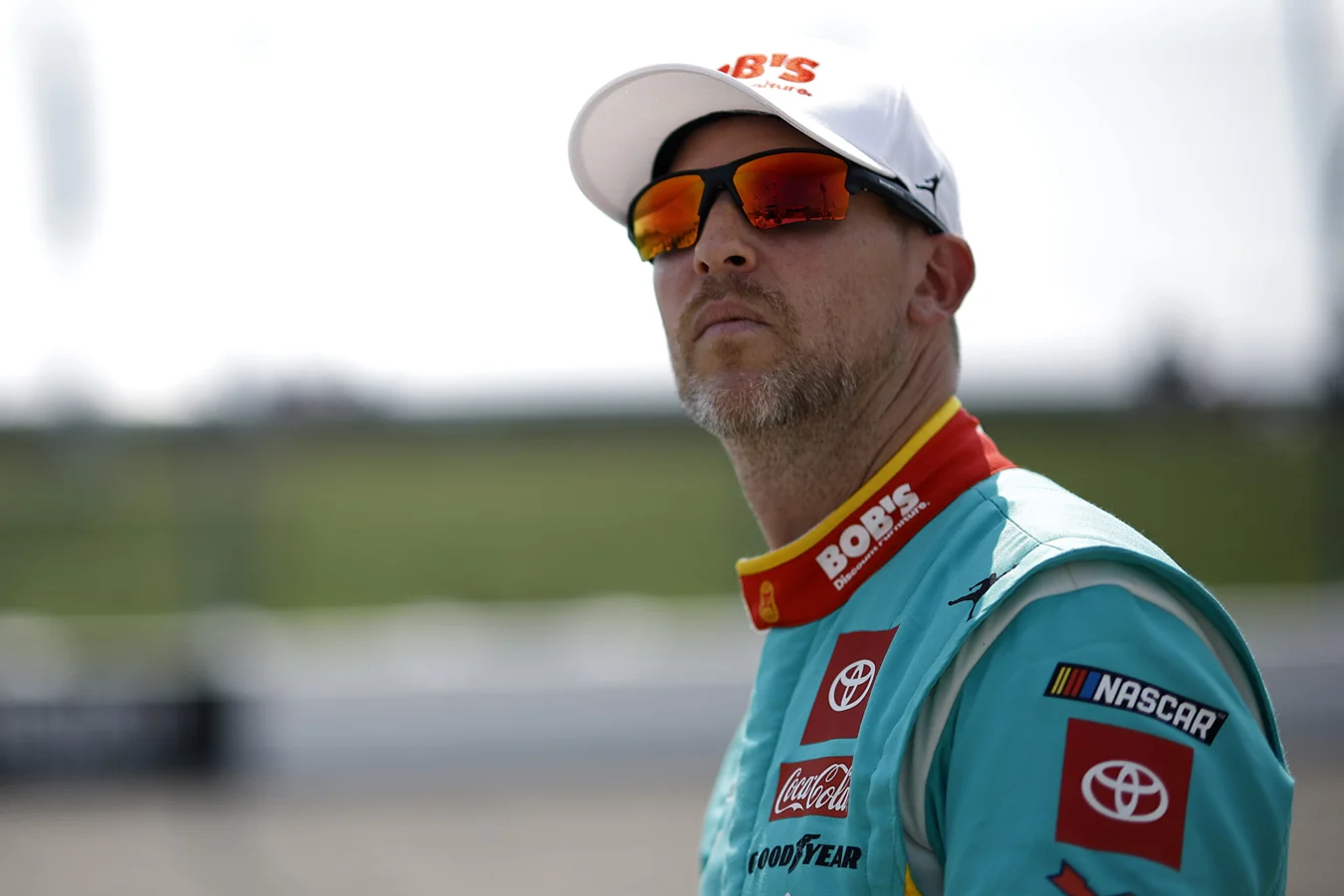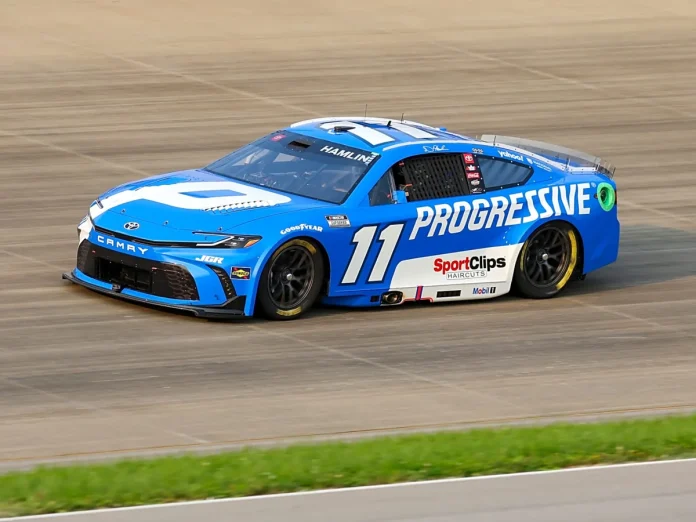Denny Hamlin delivered his most forceful criticism yet of NASCAR’s Next–Gen car after a disappointing race at Iowa Speedway, amplifying his ongoing dissatisfaction with the platform. On the latest episode of his Actions Detrimental podcast, the Joe Gibbs Racing driver made it clear that issues with the Gen 7 machine have reached a boiling point, bringing the topic of Denny Hamlin criticism of Next-Gen car sharply into focus.
The Iowa Corn 350, held at the recently repaved 0.875-mile oval, was expected to offer tight racing and showcase NASCAR’s premier product. Instead, Hamlin endured a frustrating outing, reflecting the challenge many drivers faced with a car package he believes continues to fall short.
Race Frustrations Boil Over on Podcast
After his underwhelming finish at Iowa, Hamlin returned to his studio and did not hold back. Describing his experience with raw emotion, he remarked,
This will be the everything sucks podcast. Everything sucks; God, I don’t even know where to start. I suck, the car suck, the tire suck, the Next-Gen sucks. It’s just everything, everything sucks.
— Denny Hamlin, Joe Gibbs Racing driver.
Hamlin has been calling for improvements to the Next–Gen car since its 2022 introduction. Emphasizing his technical frustrations, he explained,
The platform in which we run it on — where the back is squashed down to the ground and the front’s a foot in the air,
— Denny Hamlin, Joe Gibbs Racing driver. The experienced veteran added that aerodynamics remain a key problem, especially in traffic,
Of course, it’s bad in traffic. You get a front end that’s not on the ground. It’s in the air because we have to feed the underbody of the car. As soon as we get behind somebody, that thing just lifts right on up, and you got no front downforce.
— Denny Hamlin, Joe Gibbs Racing driver.

Drivers Grapple with Passing and Track Conditions
The Iowa event offered more action than the previous year’s race with 27 passes versus 20 in 2024, but the level of excitement and side-by-side drama fell short of expectations. While William Byron used clever pit strategy to claim his second win of the season, Hamlin’s No. 11 machine managed only a 24th-place finish, a result that added to his visible frustration.
The race was marked by a bumpy new track surface and a total of 12 caution periods in roughly 72 laps, a drastic increase from prior events. Many drivers, including Briscoe and Ryan Blaney—the latter a previous Iowa winner—noted that actual overtaking was far more difficult than the statistics suggested, slowed by the pervasive “dirty air” behind leading cars.
Blaney described the peril drivers faced,
Everyone was just super free, everyone was spinning out everywhere,
— Ryan Blaney, NASCAR driver. He went on to explain the difficulty in making passes, particularly when the preferred lane was higher up the track:
It’s hard to commit under somebody when the preferred lane was a lane or so up. Being so free, it was hard to dive in there and trust anything.
— Ryan Blaney, NASCAR driver.
Chase Briscoe, who finished as runner-up, was candid about the challenge of not running up front:
If you’re not in the lead, you’re at such a disadvantage.
— Chase Briscoe, NASCAR driver. He pointed to the issues that derailed his race, including incidents with teammates and a caution during the second stage, which compounded his difficult day.
The relentless caution periods and the unpredictability of restarts led to risky, sometimes desperate maneuvers for position. Briscoe reflected this sentiment,
On restarts, you’re making these huge desperation moves and high-risk moves. You’re trying to get everything you can.
— Chase Briscoe, NASCAR driver. Despite these efforts, many drivers remained stuck in traffic, finding it nearly impossible to advance under a car and track combination that punished attempts to overtake.
Growing Discontent and What Lies Ahead for NASCAR’s Next-Gen
The chorus of frustration from drivers like Hamlin, Briscoe, and Blaney underscores the ongoing debate about the effectiveness of the Next–Gen platform in producing competitive, entertaining racing. While pit strategy and track management allowed William Byron to outperform the field, most competitors were locked in for a difficult ride, hampered by aerodynamics and unpredictable handling.
This gathering storm of negative sentiment, voiced by drivers and echoed throughout the garage, places increased pressure on NASCAR to further revisit and refine its flagship product. Until significant changes occur, the dissatisfaction surrounding the car design and racing product at facilities like Iowa Speedway is likely to persist. The focus remains on whether NASCAR can deliver a competitive package that satisfies both its top athletes and dedicated fans in future events.


